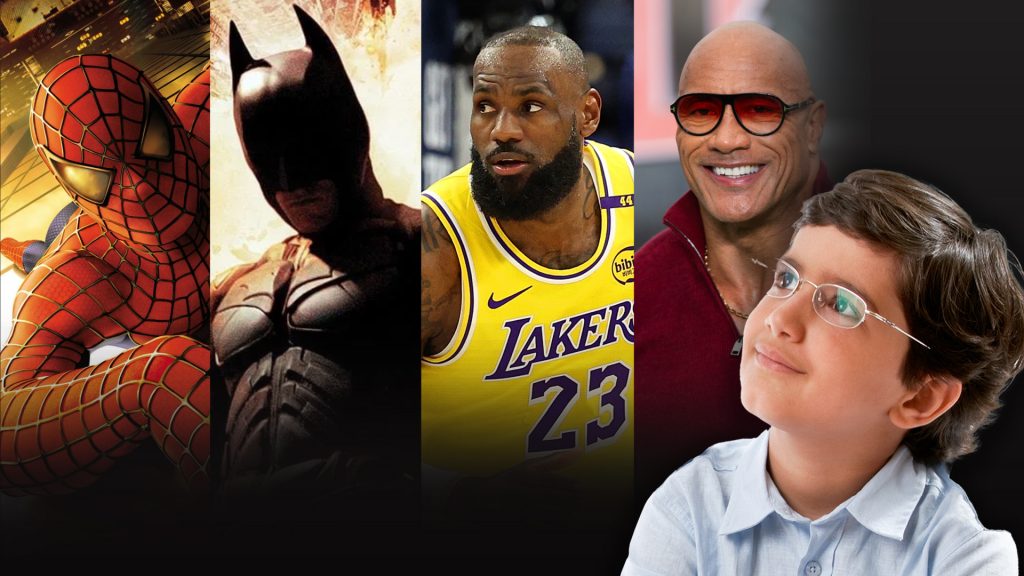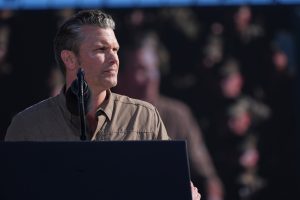Crisis of masculinity: Young men looking to TV, film and internet for role models

This is part of a Straight Arrow News series on the crisis of masculinity among young men. The series covers the increasing number of young men feeling lost in society, the lack of strong male role models in modern media and what happens when the search for help takes you down an unexpected rabbit hole.
The way masculinity is portrayed in popular culture has long vacillated between machismo and sensitivity. But as young men struggle to define what it means to be a man in 2025, they are increasingly turning to fictional characters, public figures and celebrities as role models.
Macho movie stars like Clint Eastwood and Sylvester Stallone dominated the box office for years and molded a generation of young men. But in 2025, the silver screen is populated by more impish stars like Timothée Chalamet, who have been dubbed “noodle boys.”
The role of role models
A 2024 study by the National Research Group found that 47% of men between 13 and 30 are looking to entertainment and celebrity for male role models. The same report found that 43% of young men don’t know what it means to be a man in modern society.
“We’ve seen over the last few years an increasing acknowledgement within our cultural discourse, within the media industry, around this notion of a crisis of masculinity, this sense of young men, boys, in today’s world are really struggling to understand what it means to be a man in 2025,” Fergus Navaratnam-Blair, the research director for NRG’s trends and futures team, told Straight Arrow News.
“We’ve heard a lot from (our clients in the film and TV industry) that they are really struggling right now to capture and to hold on to the attention of younger male audiences,” Navaratnam-Blair said. “Especially given they’re competing for that attention against so many other sources of entertainment, from gaming to social video and social media to international genres like anime and so on.”
According to Deloitte’s digital media trends survey, 56% of Generation Z and 43% of Millennials say social media content is more “relevant” to them than traditional media. Meanwhile, about half said they felt a closer connection to online creators than to actors and other traditional media personalities.
Fifty-two percent of young men said they still look up to real people in their lives as role models, according to NRG’s study. However, 26% said their role models are fictional characters, while 21% primarily look up to public figures and celebrities.
The changing landscape of masculinity
Hollywood’s portrayal of masculinity has evolved from the golden age of film to contemporary cinema.
“If you go back to the 1960s, for example, you can see the way in which a lot of the depictions of masculinity of that era were very much informed by the countercultural energy of the time,” Navaratnam-Blair said. “Films like ‘Easy Rider’ and ‘Taxi Driver’ and ‘One Flew Over the Cuckoo’s Nest’ all grapple with these questions of how you can sort of defy the shackles of traditional social norms and traditional sources of authority.”
“In the 1980s, you see the pendulum shift very dramatically towards a more unapologetically macho vision of masculinity,” he added, referring to films starring actors like Stallone and Arnold Schwarzenegger.
The films and television shows of that era, Navaratnam-Blair said, reflected the apex of the Cold War.
“And you see stories like ‘The Terminator’ franchise, you see stories like ‘Rambo’ and these titles that are about that sort of very unapologetically macho men, often in military roles or law enforcement roles, who have a really sort of physical sense of masculinity about them,” he said.
The 1990s saw an attempt to reconcile masculinity with modernity. Movies like “American Beauty,” “Fight Club” and “Office Space” portrayed men navigating a changed world.
“As late as the 1990s, what you saw was a very narrowband of masculinity (that) was primarily kind of white,” said Matt Englar-Carlson, a professor at Cal State Fullerton who focuses on the psychology of meta-masculinities. Few Asian or Latino characters appeared in movies and television shows, and those who did were often stereotyped. “And so, particularly men of color (were portrayed with) very negative images most of the time,” he said.
“And most of the men kind of fit into one or two different categories, like the action hero, the bumbling dad, or whatnot,” Englar-Carlson added. “And now we see a lot more variety in terms of men in different roles.”
Modern masculinity in media
As storytelling in television became deeper in recent decades, Navaratnam-Blair said, male characters transformed again.
“You had shows like ‘The Sopranos’ and ‘Mad Men’ and ‘Breaking Bad,’” he said. “They’re all about these characters who sort of live outside of the law, these characters who defy social conventions, these characters who wear this kind of very rigid mask of masculinity.”
At the same time, some of the most popular television characters were able to exhibit a different brand of masculinity.
“You had shows like ‘Modern Family’ and ‘This is Us’ and so on,” Navaratnam-Blair said. “Exploring visions of masculinity that weren’t quite so rooted in these ideas of physical strength and in these ideas of ambition and success and dominance.”
Changing social expectations have brought change, Englar-Carlson told SAN.
“I think Hollywood’s getting better at it because they’re being policed more,” he said. “And I think there’s some genuine efforts to portray men in more adaptive roles … and you don’t see the same excessive violence, homophobia and things like that anymore. And so Hollywood can be a beacon, except that stuff doesn’t always sell, and Hollywood, at the end of the day, is going to be about the bottom line.”
With so much content available today, viewers can find a broader range of masculinity in television and film.
“You don’t necessarily see one concrete vision of ‘this is what masculinity is in Hollywood,’” Navaratnam-Blair said. “In 2025, you see different actors, different entertainment brands playing with that concept in different ways and pushing it in different directions.
“And I think Timothée Chalamet is a great example of trying to create this newer version of masculinity. In something like ‘Dune,’ he sort of balances the kind of, the action hero element, with the sort of philosopher king element.”
But in films like “Call Me By Your Name,” which depicts a romantic relationship between two young men, Chalamet has “proven he’s willing to explore visions of masculinity,” Navaratnam-Blair said, “sort of outside of traditional heteronormative paradigms.”
Who are the role models?
Chalamet may be a new vision of modern masculinity. But when it came to fictional characters young men look up to, none of his characters — including Paul Atreides of “Dune” or Willy Wonka — made the list.
The NRG study found that among males ages 13 to 30, the five most popular fictional role models were Spider-Man, Batman, Superman, Harry Potter and Iron Man. No character in the top 20 was from a universe rooted in reality.
“All of this matters because it means that young men are gravitating towards a vision of masculinity that is, by definition, never going to be fully obtainable,” the study said.
“And I think as we move forward as a culture, we need to think about what that’s saying to young men,” Navaratnam-Blair added.
On the other hand, real-world role models vary from one generation to the next.
For Gen Zers and Millennials, the top five were LeBron James, Martin Luther King Jr., Dwayne “The Rock” Johnson, and Presidents Donald Trump and Barack Obama.
But for young men born since about 2010, members of Generation Alpha, the top real-world role model is the YouTube personality MrBeast. He was followed by Johnson, James, the basketball player Stephen Curry and soccer star Cristiano Ronaldo.
A new guard of influencers and online creators — people like MrBeast, Kai Cenat, Theo Von, the Paul brothers, and IShowSpeed — are endearing themselves to young men, Navaratnam-Blair said.
“All these sorts of content creators play a really, really significant role in shaping what masculinity looks like to younger audiences these days,” he added.
That trend is even more pronounced in the jobs boys in Gen Alpha aspire to. Video game streamer is number one, followed by online video creator. Social media influencer was number six, ahead of traditionally popular occupations like firefighter, police officer and doctor.
For generations, parents have neither understood nor condoned new forms of entertainment, such as rock ‘n’ roll music and video games, Navfaratnam-Blair pointed out. However, he noted that some of today’s influencers who create content in new media exhibit forms of positive masculinity.
“A lot of these creators put a real emphasis on male camaraderie, male friendship,” he said. “They make these videos with their crews of male friends that they are bantering around with and building these relationships, this rapport. They stand by these friends publicly. They incorporate them into their videos. I think that’s an element that really appeals to a lot of young men.”
Not all influencers are the same. In the next part of SAN’s series on the crisis of masculinity among young men, we’ll follow up with Will Adolphy, a young man who ended up having a “man-o-sphere” influencer become like a father figure. We’ll hear how it happened and how he actually found the help he needed, and why he is now helping other young men.





